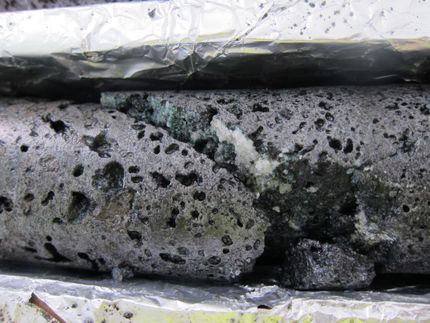New long-lived greenhouse gas discovered
Chemical appears to have highest global-warming impact of any compound to date
Advertisement
Scientists from U of T's Department of Chemistry have discovered a novel chemical lurking in the atmosphere that appears to be a long-lived greenhouse gas (LLGHG). The chemical – perfluorotributylamine (PFTBA) – is the most radiatively efficient chemical found to date, breaking all other chemical records for its potential to impact climate.
Radiative efficiency describes how effectively a molecule can affect climate. This value is then multiplied by its atmospheric concentration to determine the total climate impact.
PFTBA has been in use since the mid-20th century for various applications in electrical equipment and is currently used in thermally and chemically stable liquids marketed for use in electronic testing and as heat transfer agents. It does not occur naturally, that is, it is produced by humans. There are no known processes that would destroy or remove PFTBA in the lower atmosphere so it has a very long lifetime, possibly hundreds of years, and is destroyed in the upper atmosphere.
"Global warming potential is a metric used to compare the cumulative effects of different greenhouse gases on climate over a specified time period," said Cora Young who was part of the U of T team, along with Angela Hong and their supervisor, Scott Mabury. Time is incorporated in the global warming potential metric as different compounds stay in the atmosphere for different lengths of time, which determines how long-lasting the climate impacts are.
Carbon dioxide (CO2) is used as the baseline for comparison since it is the most important greenhouse gas responsible for human-induced climate change. "PFTBA is extremely long-lived in the atmosphere and it has a very high radiative efficiency; the result of this is a very high global warming potential. Calculated over a 100-year timeframe, a single molecule of PFTBA has the equivalent climate impact as 7100 molecules of CO2," said Hong.
Organizations
Other news from the department science

Get the chemical industry in your inbox
By submitting this form you agree that LUMITOS AG will send you the newsletter(s) selected above by email. Your data will not be passed on to third parties. Your data will be stored and processed in accordance with our data protection regulations. LUMITOS may contact you by email for the purpose of advertising or market and opinion surveys. You can revoke your consent at any time without giving reasons to LUMITOS AG, Ernst-Augustin-Str. 2, 12489 Berlin, Germany or by e-mail at revoke@lumitos.com with effect for the future. In addition, each email contains a link to unsubscribe from the corresponding newsletter.


























































